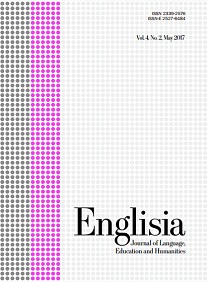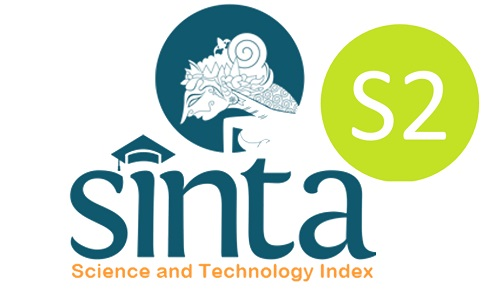LANGUAGE LEARNING STRATEGY OF STUDENTS IN INTENSIVE ENGLISH LANGUAGE INSTITUTE (IELI) OF FLINDERS UNIVERSITY
DOI:
https://doi.org/10.22373/ej.v4i2.1649Keywords:
language learning strategies, strategy inventory for language learner (SILL), gender, nationalityAbstract
This study aims to examine the influence of gender and nationality on the use of language learning strategies. The population of this study was the students who enrolled and studied in IELI of Flinders University and 34 students became the convenience samples. Strategy Inventory for Language Learner (SILL) questionnaire version 7.0 developed by Oxford (1990) was used as the main instrument of the research. The data analysis in this research used quantitative approach with Cronbach’s α for measuring item reliability, descriptive statistics for demographic data and Independent-Samples T-test for gender differences, and analysis of variance (ANOVA) for nationality differences. The results showed that gender and nationality has had an insignificant effect in the use of language learning strategies.Downloads
References
Aliakbari, M., & Hayatzadeh, A. (2008). Variation of language strategies among Iranian English students: The effect of gender. International Journal of Pedagogies and Learning, 4(3), 72-87.
Green, J. M., & Oxford, R. (1995). A closer look at learning strategies, L2 proficiency, and gender. TESOL Quarterly, 29(2), 261-297.
Hashim, R. A., & Sahil, S. A. S. Examining learners' language learning strategies. RELC, 25(1), 1-20.
Hong-Nam, K., & Leavell, A. G. (2006). Language learning strategy use of ESL students in an intensive English learning context. Educational Technology and Applied Linguistics, 34(3), 399-415.
Hong-Nam, K., & Leavell, A. G. (2007). A Comparative Study of Language Learning Strategy Use in an EFL Context: Monolingual Korean and Bilingual Korean-Chinese University Students. Asia Pasific Education Review, 8(1), 71-88.
Intensive English Language Institute. (2009). IELI Homepage. Retrieved from http://www.flinders.edu.au/intloffice/info/ieli/
Mochizuki, A. (1999). Language learning strategies used by Japanese university students. RELC, 30, 101-113.
Oxford, R. L. (1990). Language learning strategies: what every teacher should know. Boston: Heinle & Heinle.
Oxford, R. L., & Burry-Stock, J. A. (1995). Assessing the use of language learning strategies worldwide with the ESL/EFL version of the Strategy Inventory for Language Learning (SILL). System, 23(1), 1-23.
Oxford, R., & Nyikos, M. (1989). Variables affecting choice of language learning strategies by university students. The Modern Language Journal, 73(3), 291-300.
Pallant, J. (2007). SPSS: survival manual. Sydney: Allen & Ulwin.
Park, G. P. (1997). Language learning strategies and English proficiency in Korean University students. Foreign Language Annuals, 30(2), 211-221.
Stern, H. H. (1992). Issues and options in language teaching. Oxford: Oxford University Press.
Tarone, E. (1983). Some thoughts on the notion of 'communication stategy'. In C. Faerch & G. Kasper (Eds.), Strategies in interlanguage communication (pp. 61-74). London: Longman.
Weinstein, A., & Mayer, R. (1986). The teaching of learning strategies. In M. C. Wittrock (Ed.), Handbook of research on teaching (3rd ed., pp. 315-327). New York: Macmillan Publishing.
Wharton, G. (2000). Language learning strategy use of bilingual foreign language learners in Singapore. Language Learning, 50(2), 203-2435
Downloads
Published
Issue
Section
License
Proposed Policy for Journals That Offer Open Access
Authors who publish with Englisia journal agree to the following terms:
- Authors retain copyright and grant the journal right of first publication with the work simultaneously licensed under a Creative Commons Attribution License that allows others to share the work with an acknowledgement of the work's authorship and initial publication in this journal.
- Authors are able to enter into separate, additional contractual arrangements for the non-exclusive distribution of the journal's published version of the work (e.g., post it to an institutional repository or publish it in a book), with an acknowledgement of its initial publication in this journal.
- Authors are permitted and encouraged to post their work online (e.g., in institutional repositories or on their website) prior to and during the submission process, as it can lead to productive exchanges, as well as earlier and greater citation of published work (See The Effect of Open Access).









